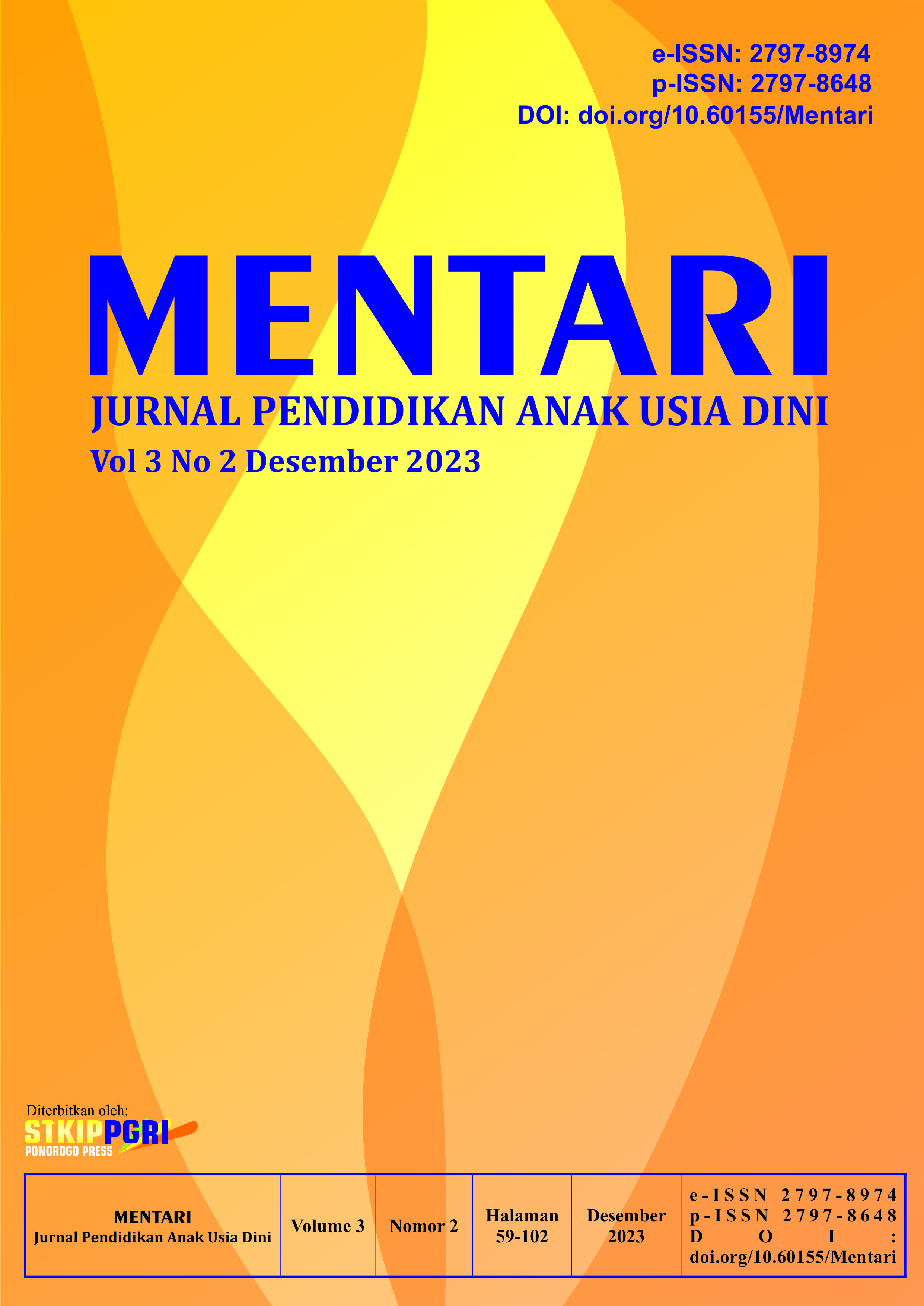Peningkatan Kemampuan Berbicara Anak Usia Dini melalui Media Buku Cerita Bergambar
DOI:
https://doi.org/10.60155/mentari.v3i2.370Keywords:
Speaking Ability, Picture Story Book, Early ChildhoodAbstract
Speaking is the main capital that must be owned so that a child’s communication process runs normally and effectively. This ability requires great stimulation from both parents and teachers at school. This study aims to describe and explain the process of improving speaking abilty on early childhood through the media picture story book of group B (1) Siti Khodijah Ngrupit Jenangan Ponorogo Islamic Kindergarten for the 2020/2021 Academic Year. Picture story book media is chosen because it is easy to see and captured by the child’s senses which is useful for training children’s speaking ability. This research was classroom action research conducted using the Kurt Lewin model. The number of objects in this study were 12 students. Data collection techniques used were observation, documentation and interviews. This study used completeness analysis as a data analysis technique obtained during the study through the determination of averages, assessment of learning completeness and performance indicators. The action taken was successful if the percentage and average value of the children’s speaking ability was at 75% or more. The results of this study shown that picture story book can improve children’s speaking ability in Group B (1) Siti Khodijah Ngrupit Jenangan Ponorogo Islamic Kindergarten. The results of pre-cycle stage, students had an average of 7.33. In cycle 1, the average value increased with a value of 9.75. The result of cycle 2 was better because the average value obtained 13 with a completeness percentage of 81.25%. This proved that this classroom action research was successful because instead of an increase, the average percentage of completeness achieved had exceeded the predetermined success indicator, which was 75%.









